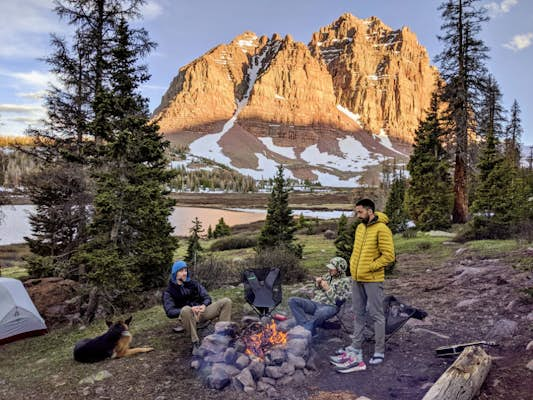Utah has some of the most beautiful national parks the United States, if not North America as a whole. Because of this, numerous state parks and other protected lands are often forgotten; many would likely have national park status were they not located somewhere that already has five. Read on to learn about one of Utah’s best kept secrets – until now.
One of those underrated gems is a wilderness area in the northeast corner that locals like myself have been backpacking to for decades without the larger world knowing about it. After my latest visit, I feel conflicted as a journalist. Should I shut my mouth and do my part to keep it a locals-only retreat? Or do I owe it to the wider world to publicize such magnificence and risk overcrowding it?
Where is the High Uintas Wilderness?
In the end, this land is your land, too. So I’ll fill you in: the place I’m talking about is the High Uintas Wilderness. Situated in the most pristine section of both the Uinta-Wasatch-Cache National Forest and Ashley National Forest, the High Uintas (as they are colloquially known) were first designated in 1984 and managed by the US Forest Service. Like all wilderness areas, only hikers, dogs, and pack animals are allowed – no motorized vehicles of any kind.
On a recent visit to the High Uintas in late June, I went to Red Castle, one of the most popular destinations in all of the Uintas, my party of four had the entire lake and golden mountain to ourselves. That is not unheard of. Years ago with a party of the same size, we shared the lake with only one other campsite on the opposite side – a group of six, first-time California visitors who said, “We’ve never seen a place this empty in the middle of summer – it’s like a mini Yellowstone that hasn’t been discovered.”
That description isn’t far off. Although Utah’s national parks are rightfully known for their all-encompassing red rock, the High Uintas provide a colorful mix of greens, blues, browns and grays, and wildflowers dot the valleys with red, purple, yellow and orange.

Things to do in the High Uintas
Located about two hours east of Salt Lake City, the area can be enjoyed as a day hike, fishing, canoeing, and paddleboarding trip when accessed from the beautiful Mirror Lake highway. But the High Uintas really shine as a backpacker’s paradise when accessed from several dozen trailheads. Getting to those will take you closer to three hours each way along a combination of both paved and gravel roads.
Once there, however, you’ll be at the start of a several hour or even days-long journey to the most remote areas of this already remote preserve. And with over 1000 lakes, half of which are stocked with fish, you won’t go hungry while enjoying a seemingly unlimited supply of brook trout that taste like delicious salmon. The first time I went many years ago, I hadn’t fished since I was a boy. But by the end of the long weekend, I was reeling them in and getting my fill for breakfast, lunch, and dinner.
What to know about visiting the High Uintas
One of the most defining characteristics of the High Uintas mountains is their rare east-to-west orientation. What that means to visitors is highly volatile weather. It’s not uncommon to have it rain three to four times in a single day, interspersed with three to four times of the bluest skies you’ve ever seen. Or to be awoken at night by one of the most terrible thunderstorms, followed by a breathtaking clearing of the clouds for one of the most magnificent starry night skies you’ve ever seen.

In other words, rain gear and layers are a must, even in the dead of summer, which is even capable of snow on rare occasions. And with so much snowfall in the winter, the area is inaccessible for more than half of the year.
Granted, the High Uintas aren’t perfect. They can get crowded with in-the-know Utahns on holiday weekends in July and August. But in most cases there’s more than enough room to spread out. Since visiting them over a dozen times this century, I’ve never felt crowded out.
Maybe that will change with the publication of this story. But I doubt it. It usually takes a national park designation and drive-up access to truly do that. Until then, this isolated, quiet, and striking stretch of mountains and valleys beckon.
You might also enjoy:
The world’s 7 best new long-distance hikes to do in 2020
The Grand Circle is the ultimate US Southwest road trip
How to road trip the Rocky Mountains on a budget
